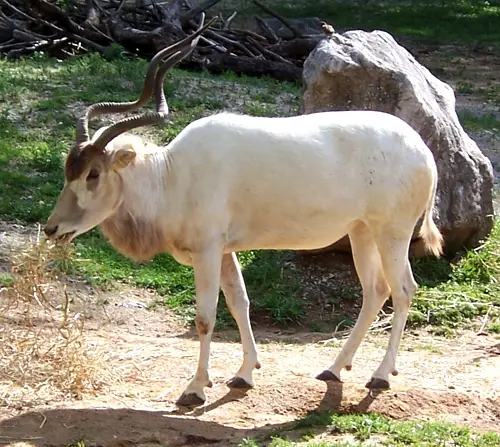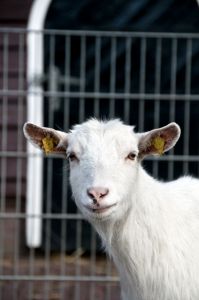Javelina
Peccaries are more slender and will generally weigh 30-50 pounds less than pigs, have longer, thinner legs and smaller hooves.
Javelinas have only 3 toes on each hind foot upper tusks (1.5 inches long) are pointed down.
They have large heads and long snouts with thick coats of dark-gray, bristly hair and hair around the neck. A mane of long, stiff hairs runs down the back from head to rump, where scent gland is located.
The adult male Javelina is 46 to 60 inches in length and is about 2 feet in height. The adult weighs between 40 and 60 pounds.

Javelina
He is colored a grizzled black and gray overall with a stripe that is lighter around the shoulders. The fur is very coarse and hardened.
Javelina travels in bands, from about 8 to ten animals although larger groups have been noted with as many as 40 or 50 animals.
They are active very early in the morning and later in the evening when the air is cooler. They eat, sleep and hunt for food together, and have one leader, a male who is usually the largest and strongest.
Javelinas seem to always remain near a source of water that does not dry up in any season. They live in the groups eating roots, insects, worms and small reptiles.
Primarily herbivorous, they have very complicated stomachs for digesting coarse or barely chewed food.
Those who live further north will eat herbal foods more often than the insect components.
In the northern range, they eat more herbivorous foods, such as roots, bulbs, nuts, berries, and grass. Yet their main source of sustenance is agave and prickly pear.
Among javelinas the dominant male does all of the breeding that is done.

Javelina
This may occur at any time during the year, depending mostly on the climate. Most young are born in summertime, but about 1.5 times more are born in rainy years.
After about 150 days, female javelinas have two or three babies, which are born in hollow logs or in the hollowed out ground.
One day later all of them join the herd again.
Only the older sisters are permitted with the youngsters. They are very often the nursemaids to the new babies, which will be weaned in about 3 months, and be independent at about 11 months.
Hunting takes a great toll on javelina, but aside from that, they may live up to 24 or 25 years.
Javelina, when left to their own devices are very peaceable, however when disturbed or whilst young ones are involved javelina are extremely dangerous animals and have seriously wounded many hunters and dogs with their sharp tusks.
Find out more about the Javelina over at Wikipedia »




Aww, they’re adorable. They’re also quite interesting..It’s a tad bit funny how the legs are are so small in contrast to the larger body xD